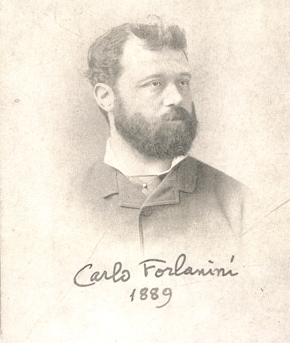Forlanini, Carlo

Carlo Forlanini (Milan, 1847 – Genoa, 1918) graduated in Medicine at Pavia University in 1870, after training at the Experimental Medicine Laboratory founded by Paolo Mantegazza. After practicing medicine in Milan, he started teaching Propaedeutic and Medical Pathology in Turin, and later came back to Pavia, where he taught Medical Pathology and Clinical Medicine.
Throughout his career he was dedicated to the study of pulmonary afflictions, especially tuberculosis. He devised a treatment based on compression and immobilization of the lung by artificial pneumothorax. The Forlanini method essentially consisted of putting the afflicted lung at rest to facilitate healing, by introducing inert gasses (nitrogen or filtered air) in between the pleural layers with a simple needle.
His ideas were not easily welcomed by doctors of the time, and it was many years before his method was approved and adopted all over the world.
The name Forlanini is also linked to other researches: he was among the first in Italy to study arterial pressure and it was one of his students, Scipione Riva-Rocci, who invented the sphygmomanometer.
